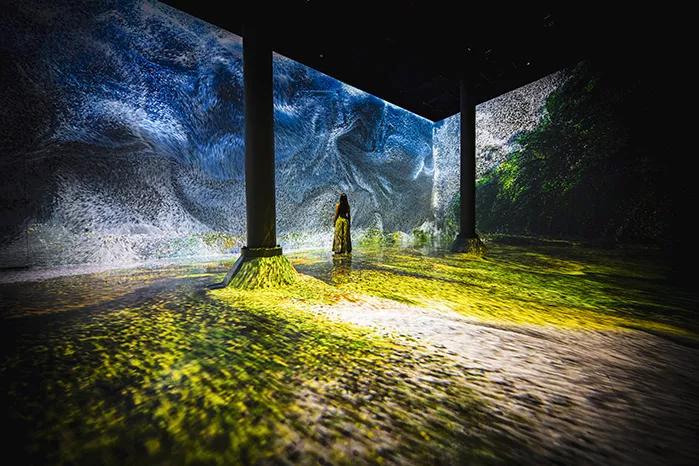For an institution showing contemporary work to omit new media practice, I won’t say it's irresponsible, but it’s ignorant.
Indietro
Technology and art. At first sight, these might seem two distinct disciplines. But, throughout history, technology has served as a source of inspiration for celebrated works and has provided artists with new tools for expression. Today, the two are interlinked more than ever. Technology is the fundamental force in the development and evolution of new art forms, with new media / digital art as the pinnacle of this symbiosis of technology and art. In this post, we’ll elaborate on a number of these new technologies and refute some of the art museums’ hesitancies on digital arts.
It’s said that art and the ability to create art is what differentiates the human species from anything else in this world. And for a long time, art was traditionally seen as a tangible thing created by a human being, a person with skilled handcraftsmanship. But what if you no longer need paint brushes to create a painting or chisels to sculpt figures? New technologies are changing the way art is created and shared, and open the gateways for new artistic concepts from artists that think beyond the conventional boundaries of the art world.
Artificial intelligence is one of those new technologies. AI in museums is still in its nascent stages but has received growing interest across the sector - from its use to improve services and workflows to creative experiments by artists.
 Multimedia artist Refik Anadol, for instance, was one of the firsts to explore the potential of synergies between art and machine learning. "As an artist and a researcher, I'm really inspired about how we can make the invisible more visible," Anadol says. “Translating data to reinterpret and narrate a world that we cannot see or touch.”
Multimedia artist Refik Anadol, for instance, was one of the firsts to explore the potential of synergies between art and machine learning. "As an artist and a researcher, I'm really inspired about how we can make the invisible more visible," Anadol says. “Translating data to reinterpret and narrate a world that we cannot see or touch.”
More about his inspiration in this Barco interview.
For an institution showing contemporary work to omit new media practice, I won’t say it's irresponsible, but it’s ignorant.
Honor Harger
former curator at Tate Modern, London
Contemporary art institutions claim to cover all kinds of contemporary art; but in practice, they sometimes don’t. The last decade has introduced numerous significant digital artists that use advanced technology to make memorable installations and performances. These artists deserve a stage.
Also, by giving the opportunity to young upcoming digital artists, galleries and museums open the doors to new generations of visitors. In our previous post, we mentioned that for museums to be successful in the 21st century, they need to understand how to connect with younger generations, speak their language and sync with their interests. Most people understand the need for exhibitions targeted towards children, but engaging young adults seems to be more challenging. Young adults are heavily immersed in today’s digital culture, which is why museums should look more into offering digital content to the millennial market. The inclusion of their peers’ works will also give young adults the feeling of representation and a positive inspiring museum experience.
Beeple (b. 1981), EVERYDAYS: THE FIRST 5000 DAYS, 2021.
Art museums tend to be more conservative institutions. And for a long time, digital art was not considered as ‘real art’. However, earlier this year, Christie’s, the renowned auction house (not the other projector manufacturer), auctioned off its first digital-only artwork by an artist named Beeple, for nearly 70 million dollars. Many agree that this unique sale introduced the next chapter in art history with a new appreciation for digital arts.
The notion of art has evolved greatly throughout the centuries. Something new is always a bit more complex to grasp. And doubts are understandable. But if modern museums really wish to be a representative of the art of their time, then digital art is a trend they can’t ignore any longer.
Or as Glenn Lowry, director of the MoMA in New York, summarizes: “In the past, we resisted some of the directions contemporary art was moving. We missed Warhol in the ‘60s. We avoided collecting the art stars of the ‘80s. But we came to realize that we had been foolish, so we played catch-up. And what I don't want to do is play catch-up here.”
Because of its stigma, many museums were long hesitant about the curation of digital arts. But after a period of denial and deferral, art museums have now finally entered the digital art fray. Should museums really be involved with experimentation, novelties and cutting-edge art? We say “yes”!
Looking for innovative ways to display your digital art exhibits, check the Barco visualization portfolio for some inspiration.


